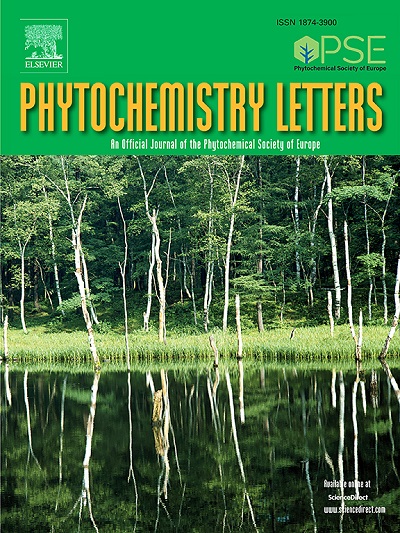Acetyl alkannin: A promising naphthoquinone derivative for breast cancer drug development research
IF 1.4
4区 生物学
Q4 CHEMISTRY, MEDICINAL
引用次数: 0
Abstract
Acetyl alkannin, a naphthoquinone derivative, has emerged as a promising anticancer agent for the treatment of breast cancer. This study investigated the cytotoxic effects of acetyl alkannin on various breast cancer cell lines, including MCF-7, SK-BR-3, MDA-MB-231, and MDA-MB-468, and elucidated its mechanism of action. Acetyl alkannin demonstrated potent antiproliferative activity across all tested breast cancer cell lines, with particularly high efficacy against the SK-BR-3 cell line, as evidenced by low IC50 values compared to the positive control, doxorubicin (IC50= 0.48 ± 0.02, 0.08 ± 0.004, respectively). Importantly, acetyl alkannin exhibited selective cytotoxicity, preserving non-cancerous cell lines such as H9c2 rat cardiomyoblast cells and MCF-10A human breast epithelial cells, highlighting its safety profile in contrast to positive control doxorubicin, which is known to cause cardiotoxicity. Mechanistic studies revealed that acetyl alkannin caused cell cycle arrest at the G1 phase, suggesting cell cycle disruption as a key mechanism of action. Notably, a significant dose-dependent increase in ROS production indicates oxidative stress as a contributing factor. However, mitochondrial membrane potential (MMP) remained unaffected, suggesting that acetyl alkannin induces cytotoxicity through a mitochondrial-independent pathway. Acetyl alkannin exhibited low caspase-3/7 activity, minimal DNA laddering, and statistically non-significant apoptosis based on Annexin V/PI staining in SK-BR-3 cells. These findings suggest that alternative cell death mechanisms, such as necroptosis, may contribute to the observed cytotoxicity, or that variations in treatment conditions, such as different concentrations or durations, could potentially enhance apoptotic responses.
Notably, acetyl alkannin maintained its cytotoxic effect in chemoresistant MDA-MB-231/BCRP cells, highlighting its potential to overcome chemoresistance.
These findings position acetyl alkannin as a promising candidate for further development as a novel anticancer agent, warranting future in vivo studies and clinical investigations to fully exploit its therapeutic potential in the treatment of breast cancer.
乙酰烷醇:一种很有前途的萘醌衍生物,用于乳腺癌药物的开发研究
乙酰烷醇是萘醌的衍生物,已成为治疗乳腺癌的一种很有前途的抗癌药物。本研究研究了乙酰烷醇对多种乳腺癌细胞系MCF-7、SK-BR-3、MDA-MB-231和MDA-MB-468的细胞毒作用,并阐明了其作用机制。乙酰烷醇在所有乳腺癌细胞系中都显示出有效的抗增殖活性,对SK-BR-3细胞系的作用尤其有效,与阳性对照阿霉素相比,IC50值较低(IC50值分别为0.48 ± 0.02,0.08 ± 0.004)。重要的是,乙酰烷酸表现出选择性细胞毒性,保留非癌细胞系,如H9c2大鼠成心肌细胞和MCF-10A人乳腺上皮细胞,与阳性对照阿霉素相比,突出了其安全性,阿霉素已知会引起心脏毒性。机制研究表明,乙酰烷醇导致细胞周期阻滞在G1期,提示细胞周期中断是其作用的关键机制。值得注意的是,ROS产生的显著剂量依赖性增加表明氧化应激是一个促成因素。然而,线粒体膜电位(MMP)未受影响,这表明乙酰烷酸通过线粒体不依赖的途径诱导细胞毒性。在SK-BR-3细胞中,Annexin V/PI染色显示乙酰烷醇具有较低的caspase-3/7活性,最小的DNA阶梯和统计学上不显著的凋亡。这些发现表明,其他细胞死亡机制,如坏死下垂,可能有助于观察到的细胞毒性,或者治疗条件的变化,如不同的浓度或持续时间,可能会增强凋亡反应。值得注意的是,乙酰烷醇在化疗耐药的MDA-MB-231/BCRP细胞中保持其细胞毒性作用,突出了其克服化疗耐药的潜力。这些发现表明乙酰烷醇作为一种新型抗癌药物有进一步发展的前景,需要进一步的体内研究和临床研究来充分挖掘其治疗乳腺癌的潜力。
本文章由计算机程序翻译,如有差异,请以英文原文为准。
求助全文
约1分钟内获得全文
求助全文
来源期刊

Phytochemistry Letters
生物-生化与分子生物学
CiteScore
3.00
自引率
11.80%
发文量
190
审稿时长
34 days
期刊介绍:
Phytochemistry Letters invites rapid communications on all aspects of natural product research including:
• Structural elucidation of natural products
• Analytical evaluation of herbal medicines
• Clinical efficacy, safety and pharmacovigilance of herbal medicines
• Natural product biosynthesis
• Natural product synthesis and chemical modification
• Natural product metabolism
• Chemical ecology
• Biotechnology
• Bioassay-guided isolation
• Pharmacognosy
• Pharmacology of natural products
• Metabolomics
• Ethnobotany and traditional usage
• Genetics of natural products
Manuscripts that detail the isolation of just one new compound are not substantial enough to be sent out of review and are out of scope. Furthermore, where pharmacology has been performed on one new compound to increase the amount of novel data, the pharmacology must be substantial and/or related to the medicinal use of the producing organism.
 求助内容:
求助内容: 应助结果提醒方式:
应助结果提醒方式:


